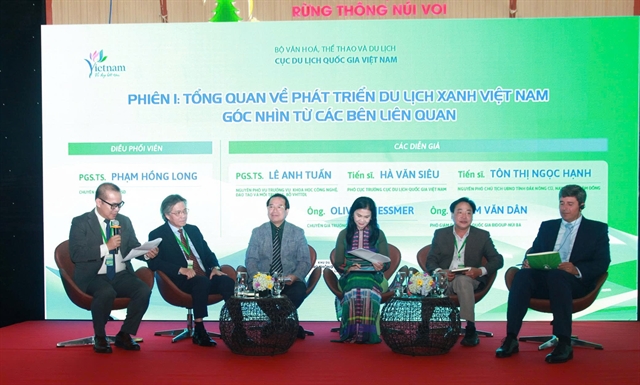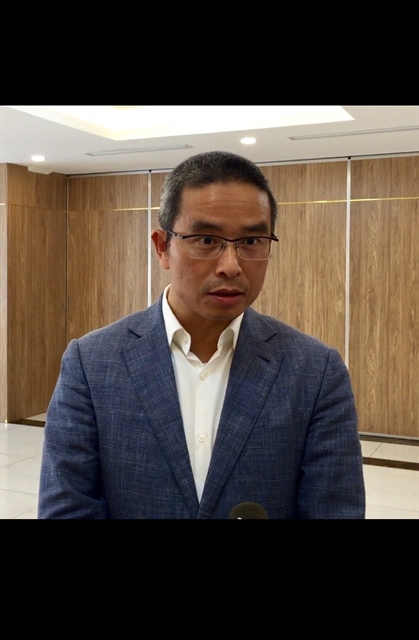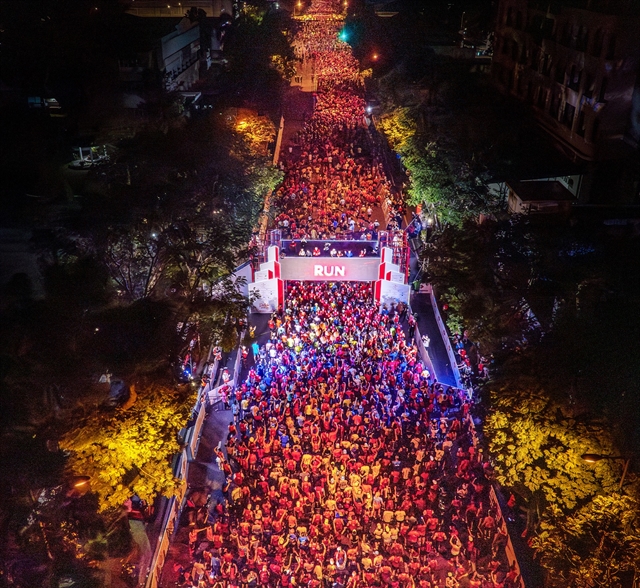 Economy
Economy

Experts told Việt Nam News reporter Nguyễn Linh Anh about the preferential visa treatment and policies that Việt Nam needs to promote itself abroad.

|
| Hoàng Nhân Chính, head of the Việt Nam Tourism Advisory Board (TAB) secretariat |
Hoàng Nhân Chính, head of the Việt Nam Tourism Advisory Board (TAB) secretariat
Việt Nam has experienced a boom in tourism over the past decade as the country climbed four places in WEF tourism competitiveness ranking. However, recent data shows Việt Nam still reports low rates of repeat visits. Why is this?
Việt Nam ranks 63rd among 140 countries and territories in the recently released Travel & Tourism Competitiveness Index (TTCI) 2019 released by the World Economic Forum (WEF), jumping four places from the latest 2017 ranking. Compared to regional peers, Việt Nam has achieved the largest overall improvement in competitiveness as other competitors just stepped up three places or even receded.
The country had the largest strides in ICT readiness, international openness, safety and security, and ground and port infrastructure.
However, Việt Nam still lags the rest of the region considerably with regards to its tourist service and air transport infrastructure, weakness in environmental sustainability, the lack of product and location diversification, transport and services infrastructure and low-skilled labour force. In international openness, Việt Nam’s visa regime, which has been liberalised somewhat in recent years, still lags compared to the relatively more open visa policies of key regional competitors.
These patterns of tourism development threaten to negatively affect the quality of the visitor experience in many of Việt Nam’s destinations, contributing to low rates of repeat visits. The share of repeat international visitors to Việt Nam stood at about 32-40 per cent in 2017, which is low compared to key regional competitors such as Thailand, where 60-70 per cent of international arrivals in 2016 were returning visitors, and Indonesia, which had 55 per cent repeat visitors in 2016.
What are the visa hassles that hold back Việt Nam's tourism sector?
Việt Nam currently grants visa-free travel to nationals of 26 countries. This compares to visa-free travel for 57 nationalities to Thailand, 168 nationalities to Indonesia, 162 nationalities to Malaysia and 132 nationalities to the Philippines. Việt Nam has introduced an electronic visa system for citizens from 80 countries.
The 15-day limit for travel has also puzzled tourists from long-distance European countries. They say a complete tour should be 20 to 30 days to take in the main sights in Việt Nam.
Therefore, TAB suggests more flexible measures be adopted, such as extending the visa waiver to 30 days.
Not to mention, there is a high risk of inaccuracy in sources of information guiding visa applications for foreigners. According to a poll by TAB, 15 per cent of foreign visitors asked for information from their embassies, 14 per cent through the Việt Nam National Administration of Tourism, 26 per cent through travel agencies, and the rest get it from informal channels or through the internet.
Việt Nam should also focus on attracting foreign visitors from Europe, the US, Australia and New Zealand who tend to travel longer and spend more on holidays.

|
| Trần Trọng Kiên, Chairman of the National Tourism Advisory Board (TAB), Chairman and CEO of Thiên Minh Group |
Trần Trọng Kiên, Chairman of the National Tourism Advisory Board (TAB), Chairman and CEO of Thiên Minh Group
Some have argued that most international visitors to Việt Nam originate from Northeast Asia, who tend to have a short length of stay and spend less than visitors from the longer-haul markets such as Europe and the US, which could harm the tourism sector in the long-term. What’s your opinion?
The vast majority of international visitors to Việt Nam originate from Northeast Asia, especially China, South Korea and Japan. These three countries accounted for 60 per cent of Việt Nam’s international arrivals in 2018.
In the first nine months of 2019, international arrivals to Việt Nam reached 12.9 million, of which visitors from China accounted for a significant amount of 30.9 per cent.
It is fortunate for Việt Nam to welcome such a large amount of visitors from Northeast Asian countries, whose economies are growing very fast. Our location allows us to greet these visitors. I believe they are strategic markets of Việt Nam.
The point is we must find ways to effectively exploit these markets. For example, China is growing very fast and I am sure there are many Chinese tourists who are willing to pay a lot. Our job is to access these tourists.
What needs to be done to boost the image of Việt Nam and promote the country’s tourism?
We must attach great important to enhancing visitors’ experience. Every foreigner coming to Việt Nam having a good experience will share it to five or six other potential visitors. Now we are greeting some 18 million international arrivals annually, which means we could welcome 70 million potential clients in the future.
Marketing and promotion must also be increasingly targeted at relatively higher-spending visitor source markets.
New and higher-quality tourism products need to be developed, both to encourage visitors to spend more but also to stay longer. This will also help address current visitor perceptions that Việt Nam lacks tourism product variety and encourage a higher share of repeat visitors. — VNS




